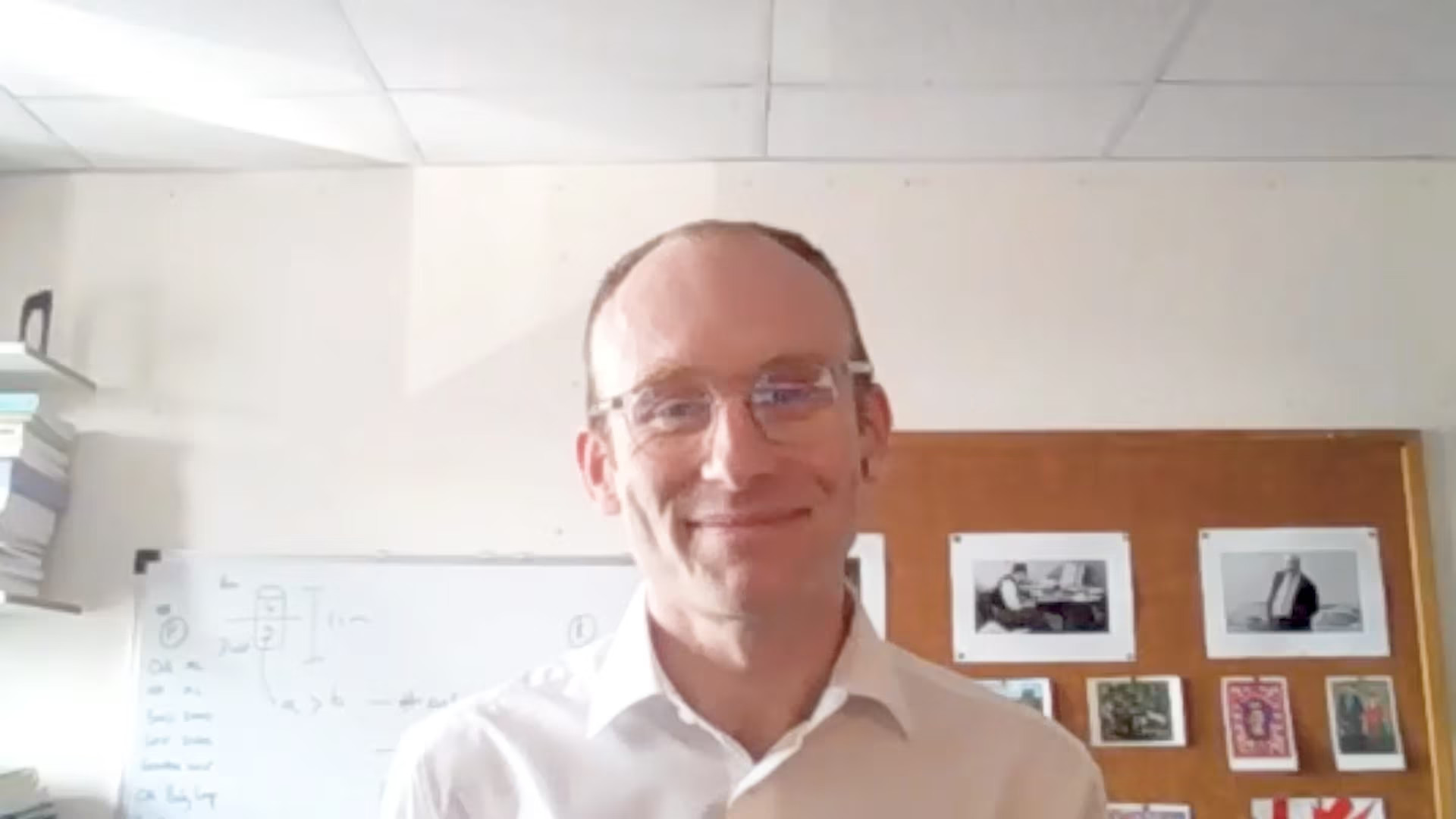Novel oral bisphosphonate formulations in osteoporosis: Nicholas Fuggle, WCO-IOF-ESCEO 2023
Novel oral bisphosphonate formulations have been developed to address poor adherence to conventional bisphosphonates associated with the difficulty and inflexibility of dosing in osteoporosis preventative treatment. We were delighted to talk with Editorial Board member Prof. Nicholas Fuggle (MRC Life Force Epidemiology Centre, University of Southampton, UK) to discuss the novel oral bisphosphonates, buffered effervescent alendronate and gastro-resistant risedronate and how they could overcome these challenges in patient adherence.
Questions
- What difficulties with conventional oral bisphosphonates lead to reduced patient adherence? (0:26)
- How could novel oral bisphosphonate formulations overcome these challenges? (2:28)
- What clinical data currently surrounds buffered effervescent alendronate? (3:10)
- What clinical data currently surrounds gastro-resistant risedronate? (4:56)
- How will this novel formulation impact patient outcomes and what further research is required? (6:32)
Disclosures: Nicholas Fuggle discloses participating in speaker’s bureaus with Viatris.
Support: Interview and filming supported by Touch Medical Media Ltd. Interview conducted by Victoria Jones.
Filmed in coverage of the 2023 WCO-IOF-ESCEO Annual Meeting.
Click here for more content on bone disorders.
Transcript
What difficulties with conventional oral bisphosphonates lead to reduced patient adherence? (0:26)
It’s a really good question. It’s a very important question. Adherence to bisphosphonates is is very poor. I mean, adherence to medications in general is very poor. So for any medication, it’s about twenty to thirty percent and for bisphosphonates in particular, and there’s some Belgian data from databases that shows that it’s as low as six percent over a three year period. So really concerning levels and there’s a very interesting paper that was written by Mickaël Hiligsmann from the University of Maastricht that looked into this in particular, what are the determinants for poor adherence to anti osteoporosis medications, particularly an issue with bisphosphonates is patient related. So are patients able to take the medication? There are lots of complex dosing instructions, associated with the particular medication of bisphosphonates, fasting beforehand, fasting afterwards, needing to drink with a big glass of water, staying upright for thirty minutes after taking it, which is all very complex and certainly works against it being taken in the way that it’s meant to be taken. Then there are social reasons such as health literacy, health economic reasons such as do insurance companies globally pay for these medications, disease specific reasons, and that’s very interesting in osteoporosis because, of course, we’re not treating a symptom. It’s not as if someone’s going to get less pain or a particular symptom is going to be reduced by taking these medications, but what we’re trying to do is reduce fracture risk in the future, which is of course incredibly important but not associated with those symptoms. So all of those manifold reasons do lead to poor adherence in the area of bisphosphonates.
How could novel oral bisphosphonate formulations overcome these challenges? (2:28)
So in order to overcome the challenge of poor adherence to bisphosphonates, there are a few different approaches. One would be patient education, obviously absolutely crucial. Another might be monitoring adherence. But, of course, novel, bisphosphonate formulations, is this relatively new area that aims to provide flexible dosing options for patients and thereby improve adherence and there are really two key examples in this space, buffered effervescent alendronate and also, gastro-resistant risedronate.
What clinical data currently surrounds buffered effervescent alendronate? (3:10)
So the data for these two formulations, I’ll start with the buffered effervescent alendronate. So one of the key things about andronic acid is that in it’s andronic acid form can be very irritant to the gastrointestinal tract, and particularly the oesophagus and so by taking it as part of a buffered solution, the pH rises, and it’s more in the form of the alendronate salt and therefore not as irritant and this has been looked at in two different countries. One is Italy and the other is Spain and the first study that looked into this was an observational study looking at, you know, how it seemed to perform and adverse effect profiles within those two country populations and, certainly, it seemed to be, you know, well tolerated. But, of course, there was no control group to compare it to and so a follow-up study that based only in Italy did seem to suggest that adherence to the buffered alendronate was better than when looking at a historical cohort of those taking conventional alendronate, which is obviously, you know, very encouraging. And discontinuation was actually down at the level of about twenty percent, which is, you know, far better than we see in real world evidence when we’re looking at bisphosphonates in general. So some encouraging data there.
What clinical data currently surrounds gastro-resistant risedronate? (4:56)
Well, for gastro resistant risedronate there were studies in, you know, between 2010 to 2013, mainly performed by Mike McClung from the US. Looking at how this performed vastly taken before breakfast and after breakfast and also compared to conventional risedronate and certainly, there does seem to be beneficial effects. It seems to be better tolerated and it’s certainly in the later studies, looking at real world evidence, does seem to be associated with some benefits in terms of reduced instance of fractures. That only appears at sixty months after taking the medication. But nonetheless, this is an important signal and one that we certainly need to take note of and more recent studies looking at databases and real world evidence have also shown benefits in particular populations, so particular age groups and also the very high risk category of fracture risk. So It’s certainly a burgeoning area. There is a need for further work and evidence, but certainly these are encouraging signs and as I said, right at the very beginning, we really need to attack and approach this issue with adherence to bisphosphonates, and certainly this is one way to do that.
How will this novel formulation impact patient outcomes and what further research is required? (6:32)
So the hope is that this would improve adherence to medications by giving patients a flexible dosing regime and therefore, attacking some of those issues that are patient related or that are therapy related to do with the adherence to medications. So this would have to be used as part of a generalized approach together with patient education, counselling, and also potentially monitoring tools, maybe digital tools. But I think a combination of those will hopefully see improved adherence to oral bisphosphonates as we move forward and ultimately, improving the fracture risk profile for osteoporosis patients with whom we’re working.
Subtitles and transcript are autogenerated.






